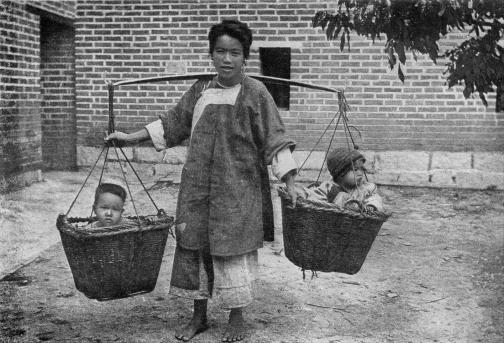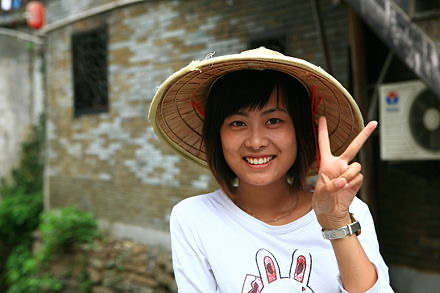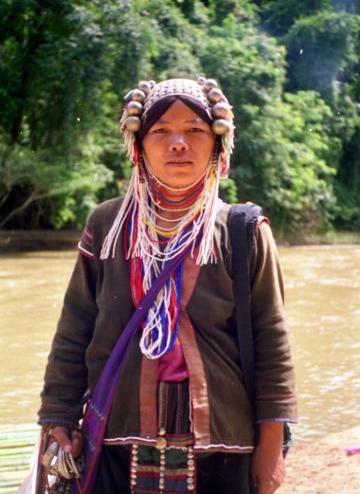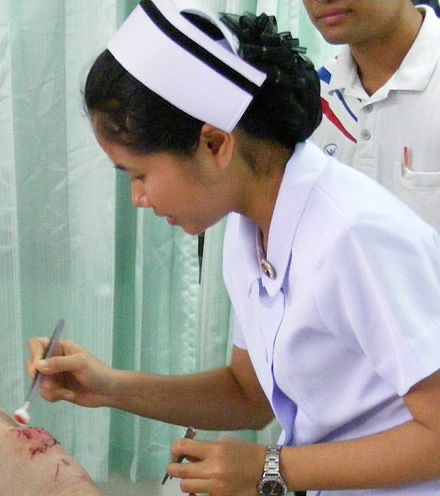1. Introduction
Female are increasingly being highlighted in the media, and the term “feminism” has become an online buzzword. For instance, the revised national birth rate for 2021 is only 7.52%, an 11.7% decline from 2020. The degree of education in the area is obviously related to the amount of reports and perceptions that transcend the most conventional and rudimentary sexuality that floods the media. According to polls, the image of women in regions with a high level of education is typically more transformed in terms of promotion in the job, freedom to have children, economic independence, and freedom to dress, while the contrary is accurate in regards to the conventional transmission of the household or the objectification of women [1], with some individuals always seeing marriage as a standard and flag for female’s professions.
Nonetheless, currently, it is not difficult to discover a diverse depiction of women in popular television shows, films, and even commercial advertisements [2]. And although this is a progressive process around the world. There is also a growing interest in the image of women, encompassing political, economic and cultural aspects. And the status of women is gradually increasing, with different levels of style represented on screen and in front of the camera, where freedom and independence are valued, how are Asian women depicted in the new media in those fields, and is there any racial bias or stereotyping involved? This paper explores how Asian females are portrayed in the media, mostly in Europe and America in their post.
This paper is divided into three sections, it commences with the historical evolution of Chinese and Thai women and then demonstrating how the visual representation of Chinese and Thai female is conveyed in various media using modern technology by text analysis. The third section concentrates on the conclusive and terminating components of current messages of Chinese and Thai women in the media and the relevance of how humans should cope with women’s shifting position.
2. The Emergence of Female Characters in Both China and Thailand
To begin with, gender as an analytical concept is divided into biological and psychological definitions, according to rigorous academic interpretations. A woman is a grown-up female humanoid; a girl is a female human before maturity (inherits a pair of X chromosomes and childbirth from adolescence until maturity). The female being surveyed is the structural engineer of women. As a consequence, someone transforms into an object—specifically, an illustration product: A sight [3]. Since the beginning of the twentieth century, the Chinese government has embraced the Marxist prescription for labor freedom, culminating in one of the world’s highest female labor force participation rates. Economic reform, which began in the late 1970s, had a variety of effects on China’s egalitarian gender situation [4]. They were previously repressed in China and endured under a patriarchal social order characterized by differing attitudes. From the eleventh millennium B.C. onwards, Pre-modern Chinese society was mainly male-dominated and patrilineal, as well as the freedoms and possibilities open to women varied concerning the historical period and regional situation. Right after the Communist Takeover in 1949, Chairman Mao replaced the common use of the term “女人” [nüren] with “妇女” [funü] as he famously said, “妇女 [funü] 能顶半边天” (Women can hold up half the sky) [5].
Women were arguably the first in Asia to be granted the opportunity to vote in Thailand in 1932, but they remain underrepresented in Thai politics. In the 1920s, women were permitted to study at Chulalongkorn University, King Rama VI encouraged women to dress according to contemporary fashion and educated to become autonomous professionals and a new female newspaper pushed for women’s independence and equality. According to the National Statistical Office of Thailand, female Thais marry younger than male Thais, and women are recognized as “heads of households” in 24% of Thai households. Thai made marital rape illegal in 2007 [6]. Access to intellectual rights was a major turning point in Thai society at the time, and women gradually entered multiple jobs and professional roles, including doctors and lawyers, who once had social status and were not limited to low ranking and cheap labor.
The importance of women’s self-perception continues to rise within China and Thailand, and as comparable Southeast Asian countries, both have implemented varying levels of legislative modifications and social industrial promotions, such as supporting female leaders, boosting the number of educational schools for ladies, and generating a female graphic in the field of technology for multimedia.
2.1. Static Analysis of the Power of Image
Pictures as a silent force to support the development of women’s watch pin culture Céline Sciamma as writer and director pays particular attention to sensual details, how sensations touch them, developing a unique blend of personal physical and emotional authenticity all together, intimacy being a real theme in her teenage years [7].
China: Initially we are presented with three images of Chinese women from various eras and ages. It is simple to note that the first image, Mother carrying two children shot in 1917, appears to be black and white, and the ladies are dressed in ethnic clothes of that era, carrying a stretcher with children in it, symbolizing that the major work and task of women was to bear children and run the family, long hair is also unsuitable for a variety of activities such as housework; the second photograph A woman in rural Jiangxi originates from 2008 by Huchuansong, when China was gradually joining the digital revolution, with a radical change in how people dressed, a wider range of images, and better picture quality. The girl in this photograph gladly poses for the camera and also portrays an authentic and modern image of a lady, yet she has not yet escaped a certain regional style; the final image is an equivalent portrait of Yang Mi, one of the present most popular Chinese actresses, who is staring intently into her camera, displaying her elegance and attractiveness in a compassionate and self-assured manner, at the moment when people has also mastered filters, shooting techniques, and the feeling of close-ups, as though they are speaking to the viewer.
Since then, the pictures of Chinese women have changed dramatically, from being embarrassed to appear in front of strangers to being competent to record their appearance and graphic in front of the general population’s eye and camera lens, indicating that the duties and responsibilities of women are changing in a subtle way, while the public’s expectations and standards of women as a gender are gradually changing.
|
|
|
(a) Mother carrying two children. | (b) A woman in rural Jiangxi. | (c) Yang Mi. |
Figure 1: The image of women in China [8].
|
|
|
(a) River Woman in Northern | (b) Certified nurse “Som” | (c) Baifernbah, ELLE |
Figure 2: The images of women in Thailand [9].
In Figure 2(a), the Thailand image, on the other hand, is an ethnically distinct depiction of a farming lady, and the shot with the river is an excellent representation of Thai women’s inextricable relationship with rivers. The confirmation that Thai women have officially joined medical school is shown in the Figure 2(b), demonstrating that the role of Thai women in society has been substantially strengthened at this time. Also, comparable to the photo of Chinese actress Yang Mi (Figure 1(c)), the third portion is a screenshot of Thai famous actress Baifernbah on the cover of ELLE magazine in 2023 (Figure 2(c)). Despite the fact that the photographs are immobile, we can observe the dynamic gaze and conversational frameworks that have evolved from stereotypical posture and clothes to the current day.
2.2. Dynamic Analysis of the Power of Movie and TV
Simultaneously, carrying on from this, Stuart Hall supported the four-stage theory to convey the reproduction of the coding of a message [10]. One may investigate the media’s portrayal of women’s roles and status through dynamics. When it comes to emerging multimedia, people need a variety of films and TV series, along with reality television programs in our life [11]. A television set is already a basic household necessity, and mobile phones’ high-tech capabilities are progressively being explored.
Firstly, the title of the first film is Mulan. It is a 2020 American fantasy action drama film produced by Walt Disney Pictures. This film stars Yifei Liu in the title role (Figure 3), alongside Donnie Yen, Tzi Ma, Jason Scott Lee, Yoson An, Ron Yuan, Gong Li, and Jet Li in supporting roles. The film additionally obtained generally, excellent reviews from non-Asian critics in the West, who applauded the action sequences, costuming, and performances while criticizing the narrative and editing. On the other hand, fans of the original animated film, the Chinese diaspora, and Chinese critics panned the movie for its protagonist’s development and ethnic and inaccurate depictions of history. Hua Mulan, the female protagonist of the film, which also includes Asian actress Yifei Liu, skillfully connects women to the social battle. Which ones truly autonomous women can break free from the chains of tradition in the face of all the hurdles and struggle in the film, as well as the cultural limits on women? It is a matter of continuity throughout the ages [12].
|
|
Figure 3: Official Release Poster and Pictures for Mulan [13].
The TV series is also a essential way to express the image. Fresh Off the Boat (2015-2020), is an American sitcom television series produced by 20th Century Fox Television for ABC (Figure 4). The series portrays the life of a Chinese-American family in Florida in the 1990s, and stars Randall Park, Constance Wu, and Hudson Yang. The series broadcast its initial two episodes on ABC in February 2015 to favorable public reaction, making it the inaugural network television sitcom in the United States in almost 20 years to feature a family of Asian Americans as lead characters. How do Asian families live in a typically American era in an environment of a completely alien world? During their oldest son’s school cultural event, the mother of the family instructs her children to wear Tang outfits, eat Chinese food, watch Chinese TV programs, and display Chinese cultural traditions. It shows that racist discourse in the context of digital media is often masked by satire and therefore embraced by the platform, which makes it difficult to confront racism [14]. And this mother not only must pursue her career, such as taking a certificate and becoming a member of the community council, but she also has to take care of the reproductive health economy and the education of her children, indicating in numerous capacities that the image of contemporary women already requires a comprehensive promotion process, which the author believes is also a kind of transformation of the balance effect, not only need to carry the power of the top, but also need to pay attention. As a result, marriage and intimate connections have grown increasingly dominating, while sexist issues in the popular media have lessened. These findings support a revival of traditional gender values that place women in the realm of “private life”, as well as the media’s reiterated use of individualistic solutions to structural issues, implying an alliance between patriarchal and neoliberal perspectives that influence visible discussion of gender while concealing structural gaps in urban China [4].
|
|
Figure 4: Official Release Poster and Pictures for Fresh off the Boat [15].
The last one is Gap: The series (Figure 5). It is a Thai romantic comedy series aired every Saturday from November 19, 2022, to February 11, 2023, on Channel 3 and the “IDOLFACTORY” YouTube channel. Gap is Thailand’s first girl love series. In light of its enormous success, the series is seen as setting the way for the current GL genre. In barely three months, it achieved 300 million views on YouTube. Synopsis: Mon (Rebecca Patricia Armstrong) had looked up to Sam (Sarocha Chankimha) until her predecessor came to her help years ago. Mon decided to apply for a position at Sam’s company after graduating, but her aloof and chilly demeanor astonished her. The closer she got to Sam, the more her feelings shifted from idolizing to love, and things improved when Sam realized she felt the same way. However, numerous difficulties stand in their way, including gender restrictions, an 8-year age difference, and social class because Sam belongs to a royal inheritor. In reality, homosexuals’ legal rights did not emerge until the 1990s, when the LGBTQ population was always ignored or indirectly denied their emotional presence, and lesbianism was never a topic of active discussion in social practise. Besides, Jitterbug’s consumer and popular appeal surged considerably during the global embargo caused by the coronavirus outbreak. During this period, the media spotlight on Jitterbug might be read as an acknowledgment of girlhood in the face of the epidemic, transitioning from a previously conceptualized environment as private and free of judgment to one of public visibility, surveillance, and evaluation [16]. The realization that Thailand, a historically large country, can suddenly offer this as a film or TV series and generate a lot of discussion is a statistical indicator of the greater acceptance and diversity of female roles, as well as the blurring of emotional gaps.
|
|
Figure 5: Official Release Poster and Pictures for Gap: The series [17].
3. Conclusion
The term “independent female” is now a label and a societal expectation that women internalize. The representation of the “stronger woman” in today’s women’s flicks and plays has, to some extent, become an “ideology” that adds to high expectations of women by enabling more women to empathize with and internalize the criteria for themselves, therefore prescribing how they should behave in society and how they should live [18]. Although this appears to be a demand imposed on women by males rather than a demand placed on women themselves, it is still basically an “oppression” of women, deeper, more subtle, and more difficult to fight due to a lack of an object of resistance. That is, it appears that women have no target entity to rebel against, even if they wish to since the oppressive content is internalized in the demands of the feminine ego.
Women are becoming increasingly influential and profound roles in social situations. Whereas, there is still a great deal of ambiguity in how female describe themselves, how society and the media define women, and how their demands are understood and satisfied. Women will continue to be represented in movies and TV dramas as long as these questions go unresolved. The carte de visite, which peaked in prevalence in the 1860s, was a mobile, public, and performative kind of media that developed significance through circulation. In examining the socially meaningful attributes of these crates, this paper contends that the Carte possesses many of the characteristics commonly linked with digital imagery at the start of the twenty-first century, and we can see a precursor to dissemination of images prevalent in the age of online socializing in this Victorian media form [19]. These issues will be covered in movies and television for as long as they are unanswered. In reality, while the placement of women’s roles in the media is steadily changing, Asian women appear just a handful of times in Europe and the United States, and in certain locations, the old “agrarian lady” and “family-oriented” stereotypes are still connected who are still prevalent in some areas, and viewers still make decisions based on their personal tastes and interests.
References
[1]. Chhaochharia, V., Du, M. and Niessen-Ruenzi, A. (2022). Counter-stereotypical female role models and women’s occupational choices. Journal of Economic Behavior & Organization, 196, pp.501–523. doi:https://doi.org/10.1016/j.jebo.2022.02.009.
[2]. Bowe, B.J., Gosen, J. and Fahmy, S. (2019). Personal Choice or Political Provocation: Examining the Visual Framing and Stereotyping of the Burkini Debate. Journalism & Mass Communication Quarterly, 96(4), pp.1076–1098. doi:https://doi.org/10.1177/1077699019826093.
[3]. Berger, J. (1972). Ways of Seeing. London: Penguin Books.
[4]. Sun, S. and Chen, F. (2015). Reprivatized Womanhood: Changes in Mainstream Media’s Framing of Urban Women’s Issues in China, 1995-2012. Journal of marriage and family. 77(5), pp.1091–1107.
[5]. People’s Daily. (1956). the first edition of “Protecting the Health of Rural Women and Children”: Under the current social conditions in China, it is difficult to alleviate the housework of rural women for a while. If women’s labor problems are not treated realistically, it will cause great losses. There is a saying in rural Hunan: “Women are half the sky.” At the climax of building socialism, can we ignore the issue of protecting the health and safety of women and children?
[6]. Randall, Melanie; Koshan, Jennifer; Nyaundi, Patricia (2017). The Right to Say No: Marital Rape and Law Reform in Canada, Ghana, Kenya and Malawi. Bloomsbury Publishing. pp. 57. ISBN 9781782258612. Retrieved 7 October 2019.
[7]. Wilson, E. (2017). Scenes of Hurt and Rapture: Céline Sciamma’s Girlhood.Film Quarterly, 70(3), pp.10–22. doi:https://doi.org/10.1525/fq.2017.70.3.10.
[8]. Figure 1. The images of women in China. (1917-2021). https://en.m.wikipedia.org/wiki/Women_in_China.
[9]. Figure 2. The images of women in Thailand. (2006-2023). https://en.m.wikipedia.org/wiki/Women_in_Thailand.
[10]. During, S. (2007). The cultural studies reader. London, New York: Routledge.
[11]. Creeber, G. (2009). Tele-visions : an introduction to studying television. London Bfi Publ.
[12]. Rachels, J. (2015) The Challenge of Cultural Relativism. In: The elements of moral philosophy. Eighth edition (international edition). New York, McGraw-Hill Education. pp. 16–34. https://contentstore.cla.co.uk/secure/link?id=c1afadd1-7810-ec11-b563-a04a5e5d2f8d.
[13]. Figure 3. Official Release Poster and Pictures for Mulan. (2020). https://zh.m.wikipedia.org/wiki/File:Mulan_poster.jpg#mw-jump-to-license.
[14]. Hokka, J. (2020). PewDiePie, racism and Youtube’s neoliberalist interpretation of freedom of speech. Convergence: The International Journal of Research into New Media Technologies, 27(1), pp.135485652093860. doi:https://doi.org/10.1177/1354856520938602.
[15]. Figure 4. Official Release Poster and Pictures for Fresh off the Boat. (2015). https://m.imdb.com/title/tt5146940/.
[16]. Kennedy, M. (2020). If the rise of the TikTok dance and e-girl aesthetic has taught us anything, it’s that teenage girls rule the internet right now: TikTok celebrity, girls and the Coronavirus crisis. European Journal of Cultural Studies, [online] 23(6), pp.1069-1076. doi:https://doi.org/10.1177/1367549420945341.
[17]. Figure 5. Official Release Poster and Pictures for Gap: The series. (2022). https://en.m.wikipedia.org/wiki/File:Gaptheseriesposter.png#mw-jump-to-license.
[18]. William Russell Neuman (2001). The future of the mass audience. New York: Cambridge University Press.
[19]. Rudd, A. (2016). Victorians Living in Public: Cartes de Visite as 19th-Century Social Media. Photography and Culture, 9(3), pp.195-217. doi:https://doi.org/10.1080/17514517.2016.1265370.
Cite this article
Huang,Z. (2023). The Visual Representation of Chinese and Thai Women in the Contemporary Media. Communications in Humanities Research,8,189-195.
Data availability
The datasets used and/or analyzed during the current study will be available from the authors upon reasonable request.
Disclaimer/Publisher's Note
The statements, opinions and data contained in all publications are solely those of the individual author(s) and contributor(s) and not of EWA Publishing and/or the editor(s). EWA Publishing and/or the editor(s) disclaim responsibility for any injury to people or property resulting from any ideas, methods, instructions or products referred to in the content.
About volume
Volume title: Proceedings of the 4th International Conference on Educational Innovation and Philosophical Inquiries
© 2024 by the author(s). Licensee EWA Publishing, Oxford, UK. This article is an open access article distributed under the terms and
conditions of the Creative Commons Attribution (CC BY) license. Authors who
publish this series agree to the following terms:
1. Authors retain copyright and grant the series right of first publication with the work simultaneously licensed under a Creative Commons
Attribution License that allows others to share the work with an acknowledgment of the work's authorship and initial publication in this
series.
2. Authors are able to enter into separate, additional contractual arrangements for the non-exclusive distribution of the series's published
version of the work (e.g., post it to an institutional repository or publish it in a book), with an acknowledgment of its initial
publication in this series.
3. Authors are permitted and encouraged to post their work online (e.g., in institutional repositories or on their website) prior to and
during the submission process, as it can lead to productive exchanges, as well as earlier and greater citation of published work (See
Open access policy for details).
References
[1]. Chhaochharia, V., Du, M. and Niessen-Ruenzi, A. (2022). Counter-stereotypical female role models and women’s occupational choices. Journal of Economic Behavior & Organization, 196, pp.501–523. doi:https://doi.org/10.1016/j.jebo.2022.02.009.
[2]. Bowe, B.J., Gosen, J. and Fahmy, S. (2019). Personal Choice or Political Provocation: Examining the Visual Framing and Stereotyping of the Burkini Debate. Journalism & Mass Communication Quarterly, 96(4), pp.1076–1098. doi:https://doi.org/10.1177/1077699019826093.
[3]. Berger, J. (1972). Ways of Seeing. London: Penguin Books.
[4]. Sun, S. and Chen, F. (2015). Reprivatized Womanhood: Changes in Mainstream Media’s Framing of Urban Women’s Issues in China, 1995-2012. Journal of marriage and family. 77(5), pp.1091–1107.
[5]. People’s Daily. (1956). the first edition of “Protecting the Health of Rural Women and Children”: Under the current social conditions in China, it is difficult to alleviate the housework of rural women for a while. If women’s labor problems are not treated realistically, it will cause great losses. There is a saying in rural Hunan: “Women are half the sky.” At the climax of building socialism, can we ignore the issue of protecting the health and safety of women and children?
[6]. Randall, Melanie; Koshan, Jennifer; Nyaundi, Patricia (2017). The Right to Say No: Marital Rape and Law Reform in Canada, Ghana, Kenya and Malawi. Bloomsbury Publishing. pp. 57. ISBN 9781782258612. Retrieved 7 October 2019.
[7]. Wilson, E. (2017). Scenes of Hurt and Rapture: Céline Sciamma’s Girlhood.Film Quarterly, 70(3), pp.10–22. doi:https://doi.org/10.1525/fq.2017.70.3.10.
[8]. Figure 1. The images of women in China. (1917-2021). https://en.m.wikipedia.org/wiki/Women_in_China.
[9]. Figure 2. The images of women in Thailand. (2006-2023). https://en.m.wikipedia.org/wiki/Women_in_Thailand.
[10]. During, S. (2007). The cultural studies reader. London, New York: Routledge.
[11]. Creeber, G. (2009). Tele-visions : an introduction to studying television. London Bfi Publ.
[12]. Rachels, J. (2015) The Challenge of Cultural Relativism. In: The elements of moral philosophy. Eighth edition (international edition). New York, McGraw-Hill Education. pp. 16–34. https://contentstore.cla.co.uk/secure/link?id=c1afadd1-7810-ec11-b563-a04a5e5d2f8d.
[13]. Figure 3. Official Release Poster and Pictures for Mulan. (2020). https://zh.m.wikipedia.org/wiki/File:Mulan_poster.jpg#mw-jump-to-license.
[14]. Hokka, J. (2020). PewDiePie, racism and Youtube’s neoliberalist interpretation of freedom of speech. Convergence: The International Journal of Research into New Media Technologies, 27(1), pp.135485652093860. doi:https://doi.org/10.1177/1354856520938602.
[15]. Figure 4. Official Release Poster and Pictures for Fresh off the Boat. (2015). https://m.imdb.com/title/tt5146940/.
[16]. Kennedy, M. (2020). If the rise of the TikTok dance and e-girl aesthetic has taught us anything, it’s that teenage girls rule the internet right now: TikTok celebrity, girls and the Coronavirus crisis. European Journal of Cultural Studies, [online] 23(6), pp.1069-1076. doi:https://doi.org/10.1177/1367549420945341.
[17]. Figure 5. Official Release Poster and Pictures for Gap: The series. (2022). https://en.m.wikipedia.org/wiki/File:Gaptheseriesposter.png#mw-jump-to-license.
[18]. William Russell Neuman (2001). The future of the mass audience. New York: Cambridge University Press.
[19]. Rudd, A. (2016). Victorians Living in Public: Cartes de Visite as 19th-Century Social Media. Photography and Culture, 9(3), pp.195-217. doi:https://doi.org/10.1080/17514517.2016.1265370.





















